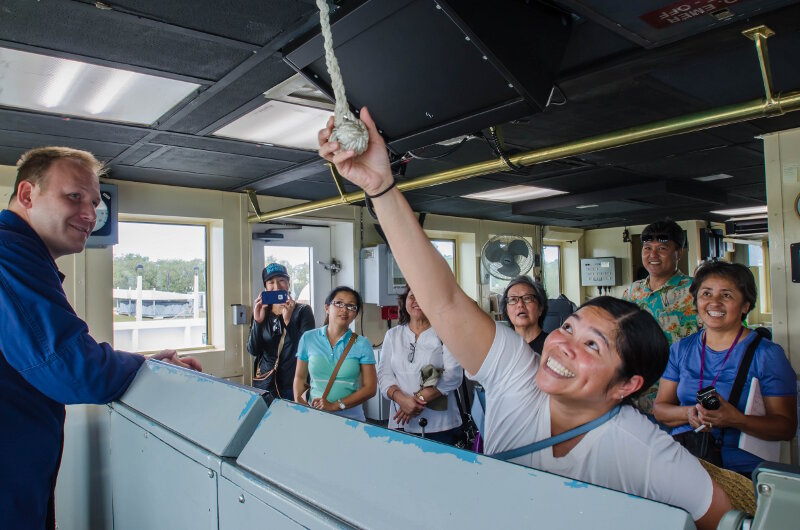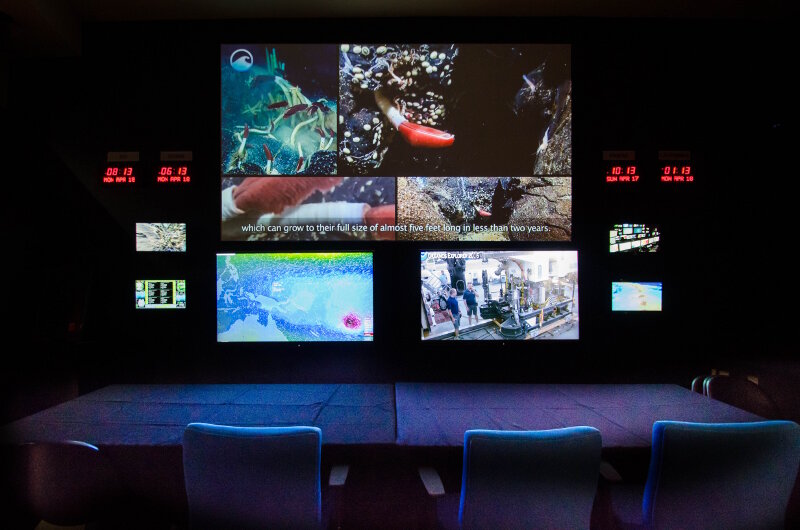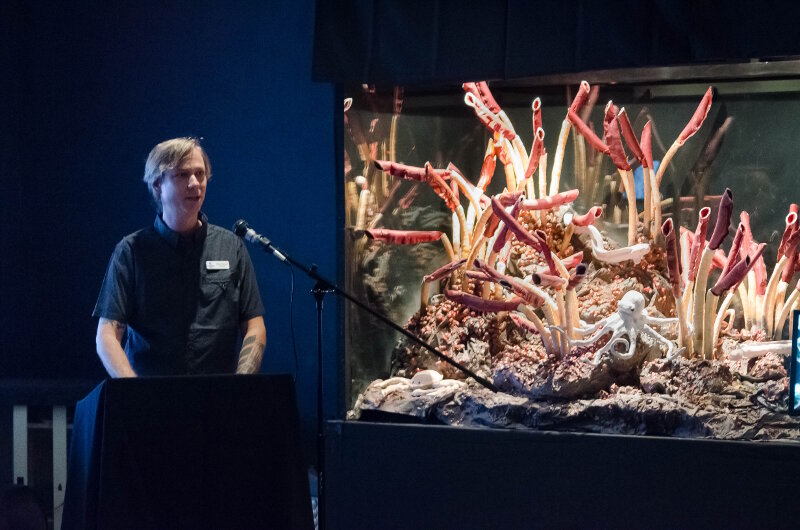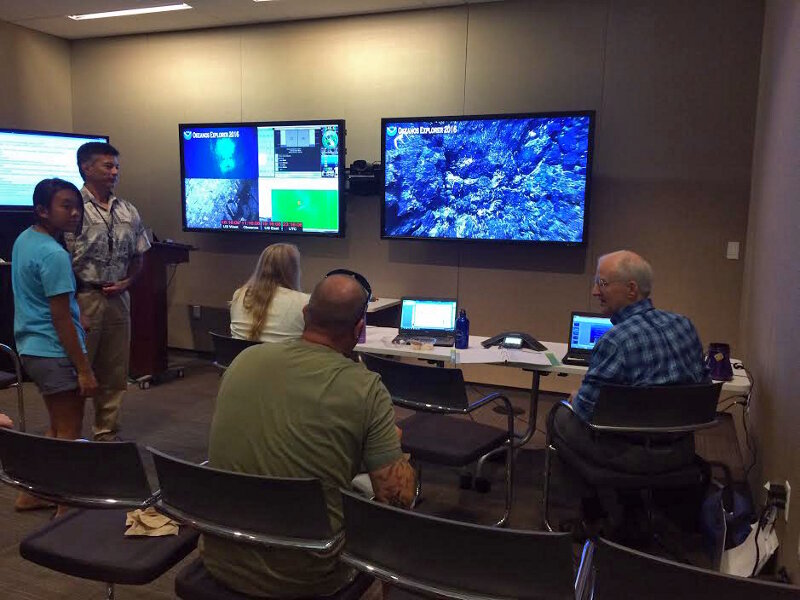
By Kasey Cantwell, Expedition Coordinator - NOAA Office of Ocean Exploration and Research
April 20, 2016

Before getting underway, outreach activities included ship tours and public talks to get the word out about the expedition. A group of teachers in Guam took part in NOAA Office of Ocean Exploration and Research’s “Why Do We Explore” professional development workshop. Here, the participants are photographed in front of the ship following a tour. Image courtesy of NOAA Office of Ocean Exploration and Research, 2016 Deepwater Exploration of the Marianas. Download larger version (jpg, 3.2 MB).
After months of planning, community engagement, and pre-cruise preparations, NOAA Ship Okeanos Explorer pulled off of Navy Base Guam dock this morning to launch the 2016 Deepwater Exploration of the Marianas Expedition! This is the first in a series of three cruises that will focus on exploring unknown and poorly known areas in and around the Commonwealth of the Northern Mariana Islands (CNMI) and Marianas Trench Marine National Monument.
The past few days preparing to depart have been extremely busy, but equally exciting! Members of the expedition team have flown in from all over the world, in some cases having spent two days in transit on multiple flights and across six time zones before arriving in Guam.

A teacher participant in the “Why Do We Explore” workshop pulls the foghorn of NOAA Ship Okeanos Explorer while visiting the bridge during a tour of the ship. Image courtesy of the NOAA Office of Ocean Exploration and Research, 2016 Deepwater Exploration of the Marianas. Download larger version (jpg, 3.3 MB).
Expedition planning required coordinating with partners in Guam and Saipan for the past six months through phone calls and email. We finally had the opportunity to meet some of these partners in person as we arrived and prepared to get underway.
Community engagement and data sharing are primary tenets of the NOAA Office of Ocean Exploration and Research, and the week leading up to the cruise has included several major efforts to get the word out about the expedition to local managers, educators, partners, and the general public. Major highlights included briefing the CNMI Senate about the upcoming expedition and attending a sneak preview opening event at UnderwaterWorld Guam to debut their newly established Exploration Command Center (ECC). This ECC will be used during the expedition both for science participation and to share the expedition with visiting members of the public in real time.

UnderwaterWorld Guam hosted a sneak preview opening event before the expedition to debut their newly established Exploration Command Center (ECC). This ECC will be used during the expedition both for science participation and to share the expedition with visiting members of the public in real time. Image courtesy of the NOAA Office of Ocean Exploration and Research, 2016 Deepwater Exploration of the Marianas. Download larger version (jpg, 4.1 MB).

Mike McCue, the head curator for UnderwaterWorld Guam, gives remarks during an opening event to debut their newly established Exploration Command Center. Additional exhibits relevant to the 2016 Deepwater Exploration of the Marianas expedition have been developed or are in the works, such as the hydrothermal vent tubeworm community display on the right. Image courtesy of the NOAA Office of Ocean Exploration and Research, 2016 Deepwater Exploration of the Marianas. Download larger version (jpg, 5.5 MB).
Back in Hawaii, our web and shore-side coordinators arrived at the University of Hawaii and NOAA’s Inouye Regional Center ECCs, where they conducted training webinars to teach scientists and students how to use our Internet-based collaboration tools to participate in the expedition from shore. Members of the shore-based science team tested these tools and got ready to participate.

Before the cruise, NOAA Office of Ocean Exploration and Research web and shore-side coordinators arrived at the University of Hawaii and NOAA’s Inouye Regional Center (IRC) ECCs, where they conducted training webinars to teach scientists and students on how to use our Internet-based collaboration tools to participate in the expedition from shore. Here, a group tunes into the live feeds from the IRC ECC and participates in the expedition from shore. Image courtesy of the NOAA Office of Ocean Exploration and Research, 2016 Deepwater Exploration of the Marianas. Download larger version (jpg, 360 KB).
As the ship prepared to leave the pier, the onboard team held their first science planning meeting of the cruise with the shore-side science team to review and finalize the dive plans for the first few dives and to discuss operations. By noon, the ship had departed Guam and was underway collecting mapping data while transiting to “Fina Nagu,” where CTD operations were conducted in the evening. An electrical failure ended CTD operations early, and mapping operations were conducted overnight offshore of Santa Rosa reef to collect priority data for fisheries managers.
Mission personnel spent the day getting familiar with ship systems and operations and preparing for the first remotely operated vehicle dive on a pinnacle feature from about 650 meters to 350 meters depth to search for commercially important species of bottomfish and precious corals. Tune in for daily dives throughout the expedition!